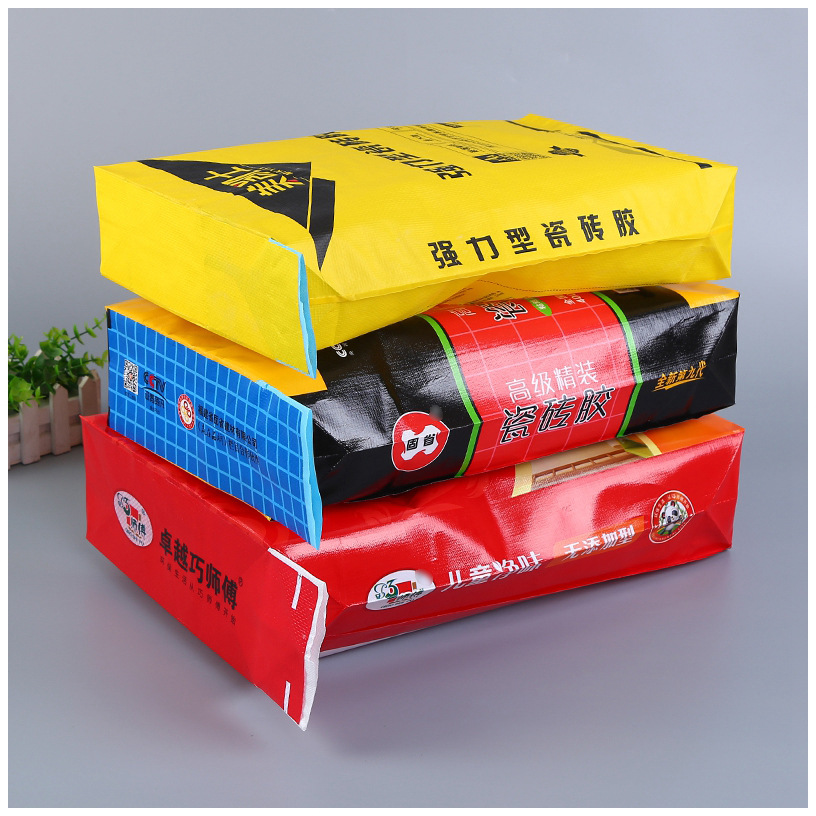
Waterproof Woven Bags are indispensable in industries requiring robust packaging solutions. These bags protect contents from moisture, ensuring product integrity during storage and transport. Additionally, advancements like fine yarn technology enhance their strength, aesthetics, and versatility. This article explores how these bags achieve waterproofing and delves into the principles and advantages of fine yarn manufacturing.
Methods to Achieve Waterproofing
Waterproofing is the defining feature of Waterproof Woven Bags. Industries often require tailored solutions to combat environmental challenges, especially moisture. Here are some proven techniques:
- Lamination
- Laminating woven polypropylene (PP) fabrics with layers of materials like BOPP film is a common method. The film acts as a barrier, preventing water infiltration.
- Advantages:
- High durability
- Smooth, printable surface for branding
- Applications: Frequently used in agriculture, cement, and pet food packaging.
- Coating
- Coating woven fabric with a layer of polypropylene or polyethylene provides a water-resistant surface.
- Advantages:
- Enhanced flexibility
- Cost-effectiveness
- Applications: Ideal for Waterproof Woven Sacks in construction and industrial settings.
- Inner Liners
- Adding a PE liner inside the bag offers additional protection against water and humidity.
- Advantages:
- Versatility for dual-layer protection
- Applications: Common in Moisture Proof Woven Bags for food grains, chemicals, and fertilizers.
- Heat Sealing
- Using heat sealing to join layers eliminates seams, further improving water resistance.
- Advantages:
- Superior sealing compared to stitched alternatives
- Applications: Utilized in Waterproof Poly Bags for sensitive goods like flour and sugar.
Product Comparison: Waterproofing Techniques
| Technique | Waterproof Level | Durability | Cost-Effectiveness | Applications |
|---|---|---|---|---|
| Lamination | High | Excellent | Moderate | Branding, retail packaging |
| Coating | Medium | Good | High | Industrial and bulk uses |
| Inner Liners | High | Excellent | Moderate | Food and chemical packaging |
| Heat Sealing | Very High | Superior | High | Sensitive goods |
These methods allow Waterproof Woven Bags to serve diverse sectors, ensuring both protection and aesthetic appeal.
Fine Yarn Technology: Redefining Woven Bags
Fine yarn technology is a groundbreaking innovation in PP woven bag manufacturing. This technique involves producing thinner and more uniform polypropylene filaments, offering multiple benefits:
- Principles of Fine Yarn Technology
- The process uses advanced extrusion systems to create finer filaments.
- Enhanced weaving machinery ensures higher-density fabric construction.
- The result is a tightly woven material with superior mechanical properties.
- Advantages of Fine Yarn Woven Bags
- Higher Density: Greater weaving density enhances waterproofing and prevents water seepage.
- Increased Tensile Strength: Finer filaments contribute to improved load-bearing capacity, vital for industrial applications.
- Aesthetic Superiority: Smooth textures and refined appearances cater to premium product packaging.
- Lightweight Yet Strong: These bags maintain strength while reducing overall weight, optimizing logistics and storage.
- Applications of Fine Yarn Technology
- Agriculture: Bulk packaging for seeds and grains.
- Construction: High-load cement and sand bags.
- Retail: Premium Waterproof PP Bags with enhanced branding potential.
Why Fine Yarn Woven Bags Excel
| Feature | Standard Woven Bags | Fine Yarn Woven Bags |
|---|---|---|
| Yarn Thickness | Coarser | Finer |
| Weaving Density | Lower | Higher |
| Strength | Moderate | Superior |
| Waterproof Capability | Basic | Enhanced |
| Appearance | Average | Premium |
Industry Examples
Fine yarn bags are extensively used in high-performance applications, ensuring both functionality and aesthetics.
Combining Waterproofing and Fine Yarn Technology
The synergy between waterproofing techniques and fine yarn technology offers unparalleled packaging solutions. Bags with both features provide:
- Dual Protection: Advanced waterproof layers combined with dense fine yarn weaves.
- Optimized Branding: Smooth surfaces ideal for high-definition printing.
- Eco-Friendliness: Lightweight materials reduce environmental impact during transport and disposal.
Final Thoughts
The evolution of Waterproof Woven Sacks has been transformative. From moisture resistance to improved tensile strength and refined aesthetics, technologies like lamination and fine yarn weaving ensure these bags meet industry needs. As demand for Waterproof Poly Bags continues to grow, these innovations position woven bags as a sustainable and high-performance choice for various sectors.